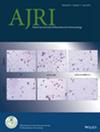Elevated Neutrophil, Lymphocyte, and Platelet Counts as Early Biomarkers of Preeclampsia Risk: A Retrospective Cohort Study
Abstract
Objective
This study aimed to evaluate the association between peripheral immune markers during gestational weeks 11–28 and the risk of preeclampsia (PE), and to explore potential causal relationships using Mendelian randomization (MR).
Methods
We conducted a retrospective cohort study involving 19, 028 singleton pregnancies between January 2020 and December 2023. Peripheral immune markers, including neutrophils, lymphocytes, monocytes, and platelets, and derived indices, such as neutrophil-to-lymphocyte ratio (NLR), platelet-to-lymphocyte ratio (PLR), lymphocyte-to-monocyte ratio (LMR), and systemic immune-inflammation index (SII), were analyzed in relation to PE incidence. Subgroup and interaction analyses were further stratified by maternal age, prepregnancy BMI, gestational age at blood test, and gestational diabetes mellitus (GDM). Causality was assessed using MR with the inverse-variance weighted multiplicative random effects (IVW MRE) method.
Results
Elevated neutrophil (RR per SD = 1.20; 95% CI: 1.09–1.33; P < 0.001), lymphocyte (RR per SD = 1.16; 95% CI: 1.06–1.27; P = 0.002), and platelet (RR per SD = 1.19; 95% CI: 1.07–1.31; P = 0.001) counts were significantly associated with increased PE risk. Associations were stronger in women aged ≥35 years, with a significant interaction for platelet count (P = 0.004). MR analysis revealed no causal link between genetically predicted immune cell counts and PE.
Conclusion
Higher peripheral neutrophil, lymphocyte, and platelet levels are associated with increased PE risk, particularly among older pregnant women. While MR analysis did not support a causal effect, these immune markers may serve as accessible early indicators and offer insight into PE pathogenesis.

 求助内容:
求助内容: 应助结果提醒方式:
应助结果提醒方式:


